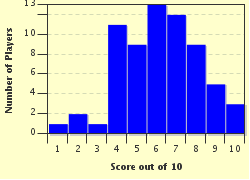Quiz Answer Key and Fun Facts
1. Let me start by introducing you to our special avian family. We have mum (peahen), dad (peacock) and baby (peachick), collectively known as peafowl. What is the scientific genus name given to our family of peafowl?
2. The plain and unassuming Mrs Peahen is on the lookout for a new mate as her last one ran off with another floozy. She would like to find the peacock of her dreams, with a fan shaped crest on top of its head, strutting vibrant blue body with iridescent blue and green tail feathers. On which continent does the most populous species of peacock originate, as shown in the image?
3. Many people, although not everyone, appreciate the aesthetic beauty of Mr Peacock boastfully fanning his impressive tail, strutting his stuff in a dance of male dominance to attract the attention of a rather fussy peahen. Which author and naturalist was credited with writing "The sight of a feather in a peacock's tail, whenever I gaze at it, makes me sick!"?
4. Once settled into their new life together, the peahen and peacock start trying for a family. What unusual occurrence happens to the male once he has finished mating for the season?
5. Mrs Peahen starts to read as much as she can about rearing her young chick. Once the egg has hatched, how long does it normally take until the young male peachick has fully grown its showy train with eye feathers?
6. The young peachick has now fledged the nest and is old enough to start feeding itself. What type of diet does the peafowl have?
7. Mrs Peahen received a letter from a long lost relative from Java who she thought had died long ago. He enclosed a photo of himself, with his bright green body, blue crest and long train of many eye feathers. What is another name for the many eyespots on his train?
8. Young peachick is curious about his extended family and would like to know more about his African relatives. What is the identifying characteristic of both male and female Congo peafowl?
9. Mr Peacock was sleeping in his tree when he woke up to the most horrendous nightmare. He dreamt that human people in India were celebrating Diwali, the festival of lights, by eating "mayur pankh", a dish which consists of tandoori peacock served with luscious juniper berries. Is this true or false?
10. I could not finish this story without mentioning a very happy and glorious wedding, with both male and female peafowl dressed in their fancy white plumage. The colouration of the all-white peafowl is caused by what condition?
Source: Author
Plodd
This quiz was reviewed by FunTrivia editor
gtho4 before going online.
Any errors found in FunTrivia content are routinely corrected through our feedback system.


